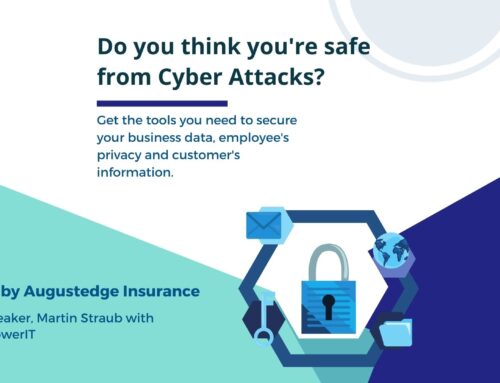There is no denying that we are an increasingly mobile society. In addition, we are increasingly technologically dependent. In a new city would you have any hope of finding your way without your cell phone? All of these facts mean that we are frequently working – and charging – on the go. From hospitals to airports to office buildings, you will find helpful USB ports just waiting to charge up your phone for the next meeting or event. While these charge stations may seem like a positive service to many work-on-the-goers, they also present dangers of data theft through a process known as juice jacking. Unfamiliar with the phrase? Learn more by reading below, and click over to check out the full article.
Juice jacking can pose a serious cybersecurity risk to those using USB ports, cables, and chargers to simply charge their devices. In an increasingly connected world, being able to communicate consistently throughout the day has become the expectation. People work in all different settings—everywhere from the office, to their homes, to hotels or coffee shops when traveling, and more. In every work space, people need the ability to access power in order to recharge their devices.
However, not every USB port, cable, or charger is secure enough to prevent data breaches. Rebecca Herold, founder of The Privacy Professor Consultancy and of Privacy & Security Brainiacs SaaS services, shares the dangers of having data breached through juice jacking, and steps organizations can take to protect their information.
What is juice jacking, and when did this emerge as a security risk?
Rebecca Herold: There are often an abundance of public USB charging stations, provided by a wide range of entities to entice folks to use their facility for working, and also to provide a free service to those in services and business buildings. I took a family member to a hospital for surgery early this year, and I noticed an abundance of public USB chargers, with multiple types of cables attached, in every lobby, and in each of the patient rooms.
However, these popular charging stations are increasingly installed with data skimmers in the USB charger ports and USB cable ends. The skimmers are similar to how those credit card reader skimmers work, except the USB charger skimmers are almost impossible for most people to easily identify. While someone is charging, aka “juicing,” their phone or computing device, these skimmers basically are high jacking, aka “jacking,” the charging activities to simultaneously steal the data, infiltrate networks, load malware, and a wide variety of other malicious activities. So, juice jacking is using USB ports, cables, and chargers to perform other, surreptitious and malicious activities, unbeknownst to those using them to simply charge their devices.




